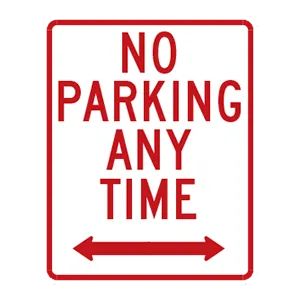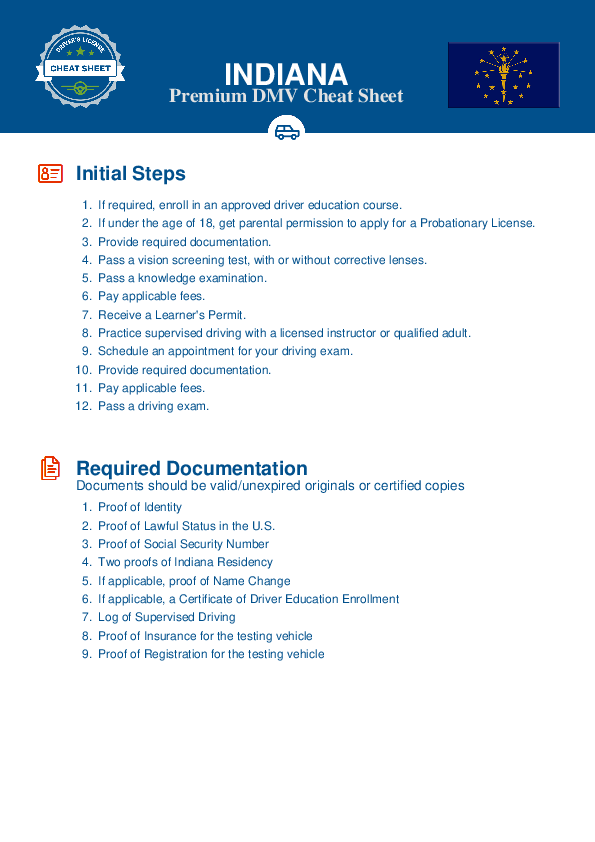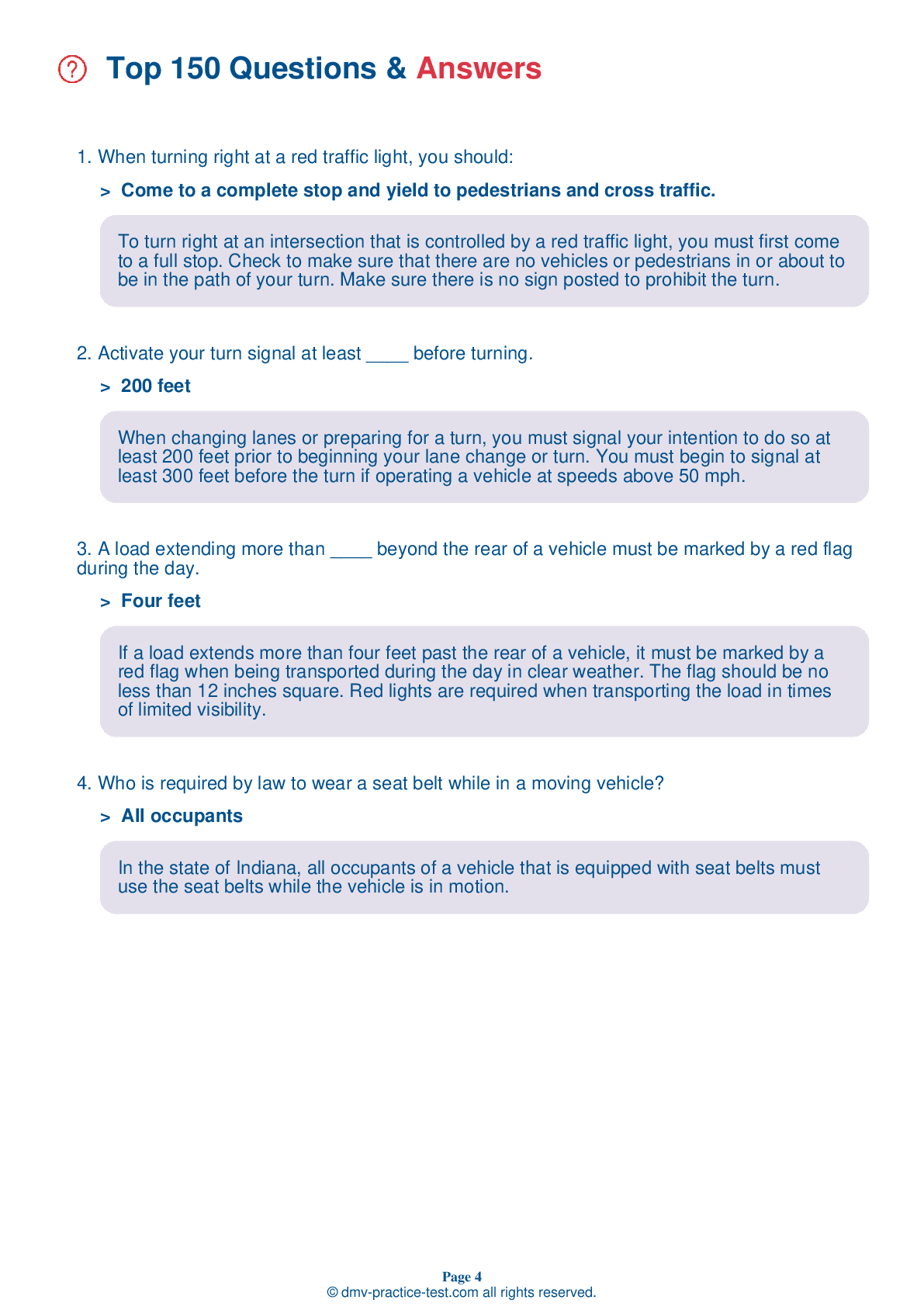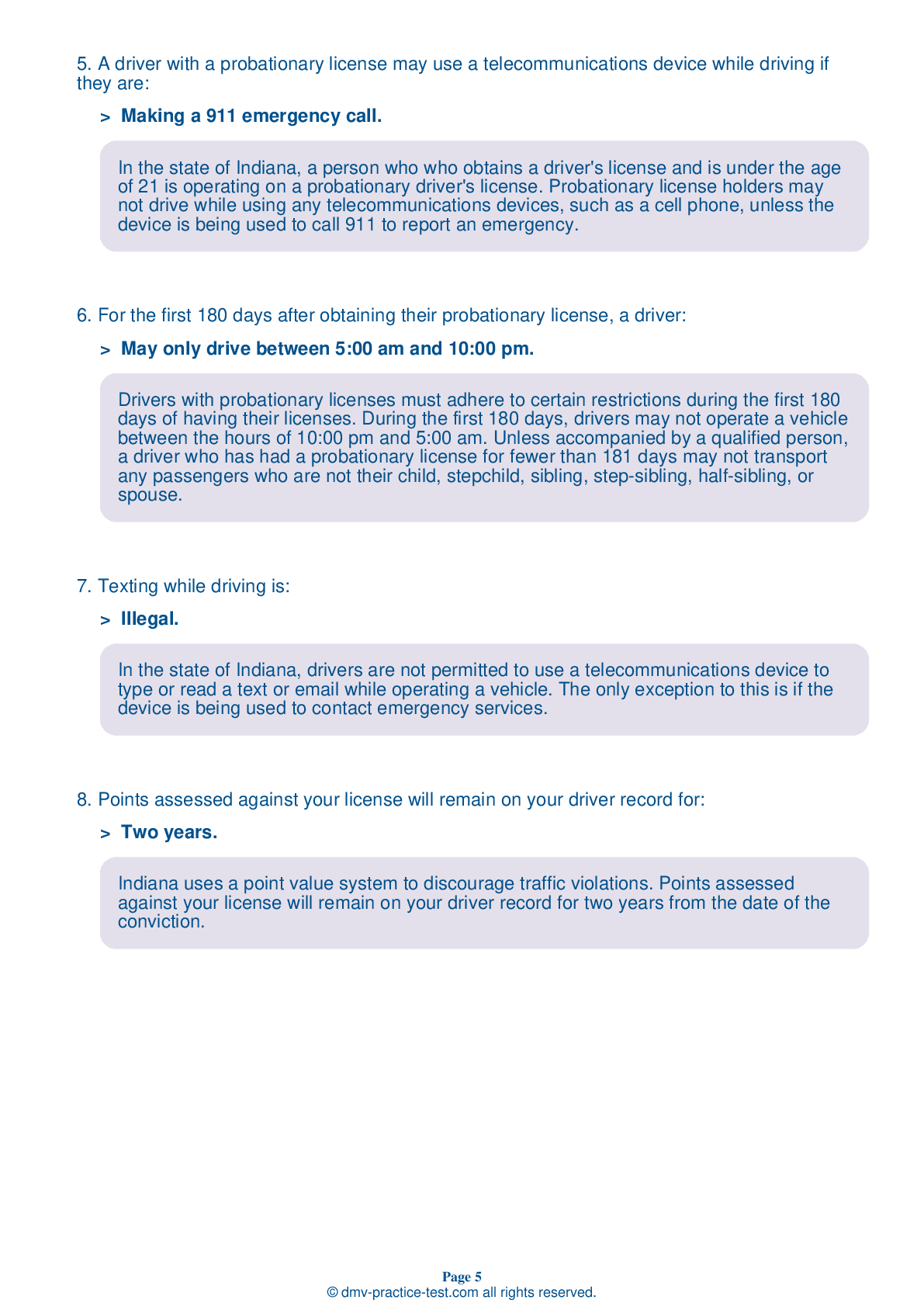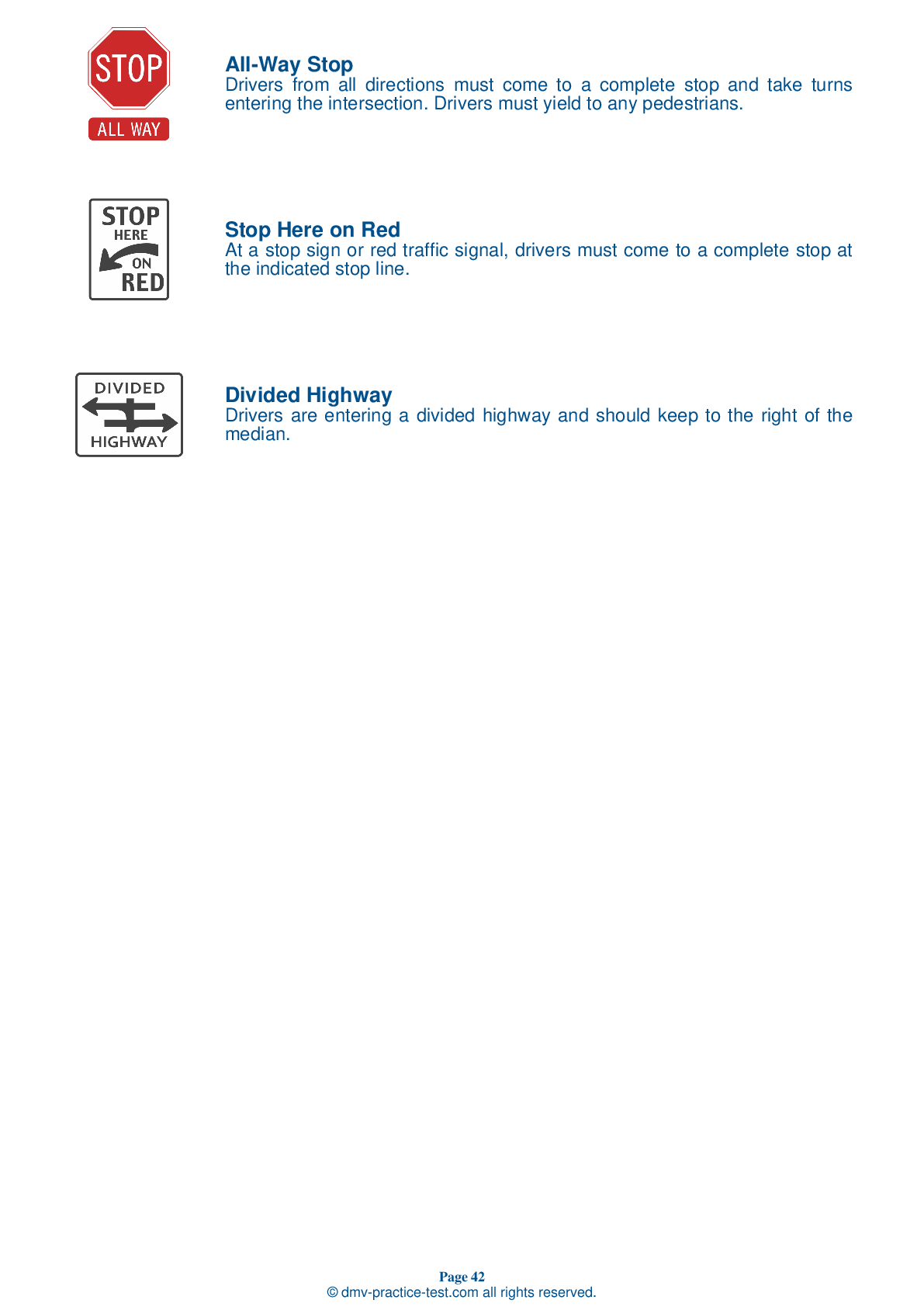FREE Indiana DMV Practice Test #19 Page 5 of 5
This set of Indiana DMV practise tests has been updated for January 2025. It includes questions based on the Indiana Driver Handbook's most significant traffic signals and laws for 2025. Use actual questions that are very similar (often identical!) to the DMV driving permit test and driver's licence exam to study for the DMV driving permit test and driver's licence exam.
On the practise exam, each question gets a tip and explanation to help you remember the concepts. The written component of the official Indiana DMV test will include questions about traffic rules, traffic signs, and driving statutes, as well as information from the Driver Handbook.
To obtain a passing grade, you must correctly answer 44 of the 50 questions. Take our DMV practise exam to help you prepare for your Indiana instruction permit or driver's licence.
The DMV exam is available in several languages.
Using any kind of testing assistance will result in an automatic fail, and the DMV may take additional action against your driver's licence, so stay away from it.
39 . When making a right turn on a green light, you must:
Unless a posted sign prohibits it, you may turn right or left at a steady green light. When turning, you must yield to other vehicles and pedestrians within the intersection.
40 . When driving near heavy trucks, other drivers and highway users must make allowances for:
When driving near heavy trucks, other drivers and highway users must make allowances for the increased stopping distance required by the large vehicles. Drivers of smaller vehicles should remain in locations where they can be seen by the driver of the large vehicle and where their view of traffic is not blocked by the vehicle.
41 . This sign means:
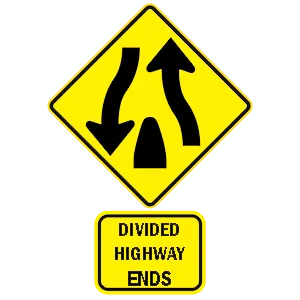
Warning signs are usually diamond-shaped with black markings on a yellow background. They alert drivers to upcoming hazards. This sign indicates that the divided highway is about to end.
42 . Activate your turn signal at least ____ before turning.
When changing lanes or preparing for a turn, you must signal your intention to do so at least 200 feet prior to beginning your lane change or turn. You must begin to signal at least 300 feet before the turn if operating a vehicle at speeds above 50 mph.
43 . This sign means:
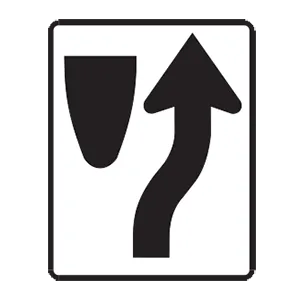
Regulation signs regulate traffic speed and movement, displaying rules which drivers must obey. This regulation sign indicates that drivers should keep right to avoid an upcoming potential driving hazard.
44 . This sign means:
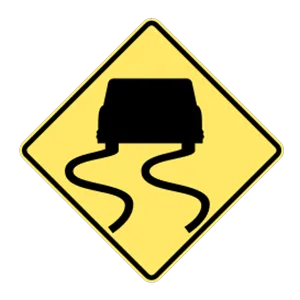
This sign warns that the road is slippery when wet.
45 . This sign means:
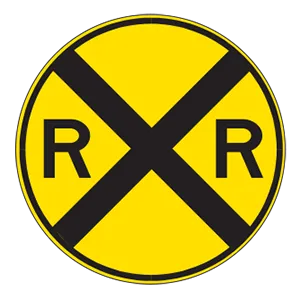
Circular traffic signs indicate upcoming railroad crossings. This sign tells drivers that they are approaching a railroad crossing and should be looking for signs of an oncoming train.
46 . Who must yield when a driver is turning and a pedestrian is crossing without a traffic light?
Drivers must yield to pedestrians when they are crossing at any intersection without a traffic light, whether or not there is a crosswalk.
47 . Highway markings:
Highway markings provide information for drivers. Markings help drivers correctly position their vehicles on roadways, inform drivers of safe passing zones, and warn drivers about upcoming conditions.
48 . This sign means:
